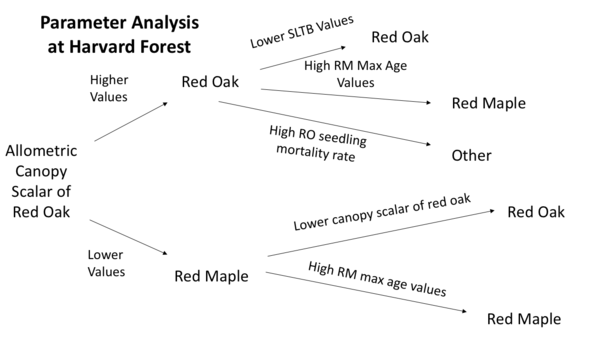Uncovering competitive mechanisms of tree competition with data assimilation
- Student
- Marissa Kivi
- College(s)
- College of Science
- Faculty Advisor
- Jason McLachlan
- Class Year
- 2019
 Outline of parameter analysis from Harvard Forest data completed in the summer of 2018
Outline of parameter analysis from Harvard Forest data completed in the summer of 2018
Understanding competitive interactions between tree species is critical to accurately predicting how forest communities will adapt to future shifts in climate and land use. However, the complexity and extended time scale associated with these interactions limit our investigations of them. Using a data-informed model, we worked to better understand tree species dynamics within New England, by considering four different sites within the region.
Our study focused on the competitive relationships between red oak and red maple at two second-growth sites and American beech and eastern hemlock at two old-growth sites. At each site, we assimilated site-specific statistically-estimated tree-ring forest biomass data into the LINKAGES model from 1962 to 1984, using data to annually constrain model results. We then conducted analyses of correlation coefficients to determine the species parameters most significant to the resulting compositional differences found among the site’s 200 ensemble members. Additional analyses considered differences in carbon storage and climate sensitivity between second- and old-growth forests.